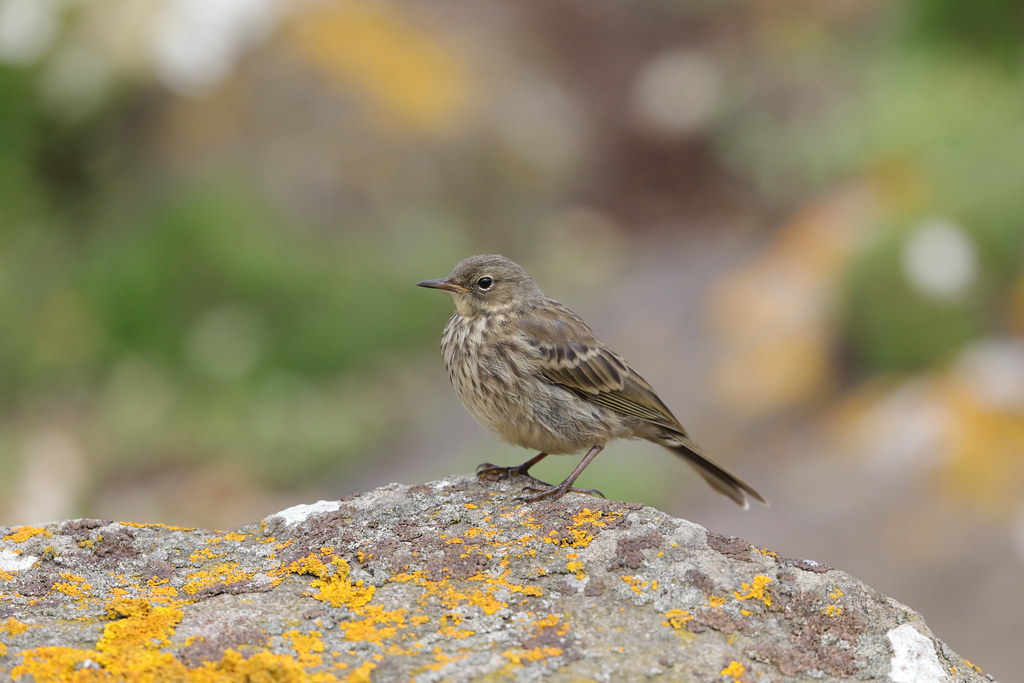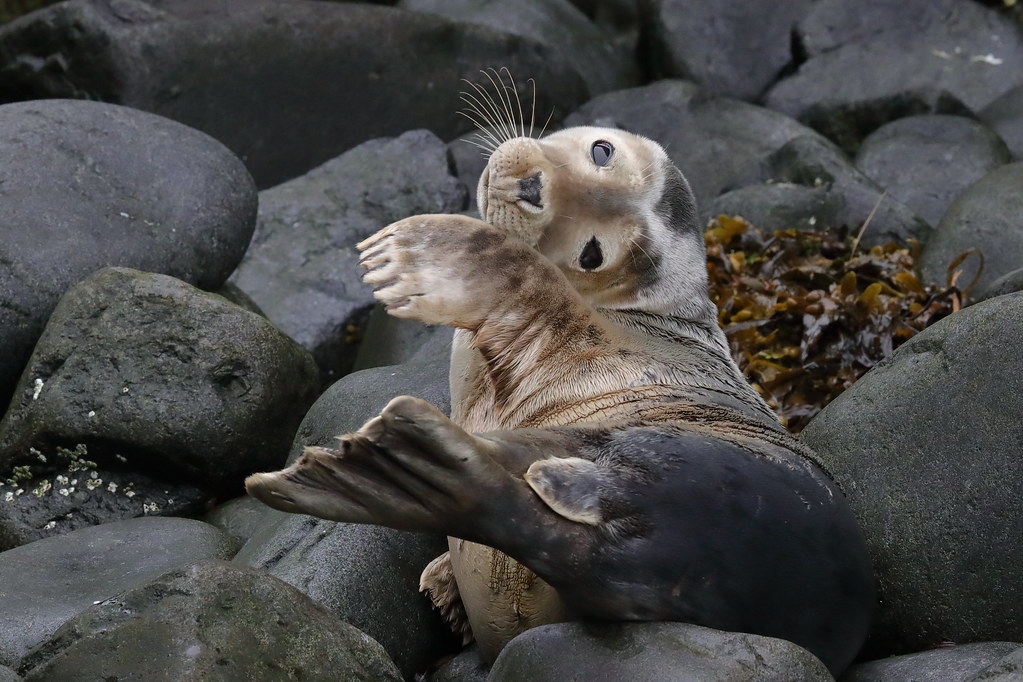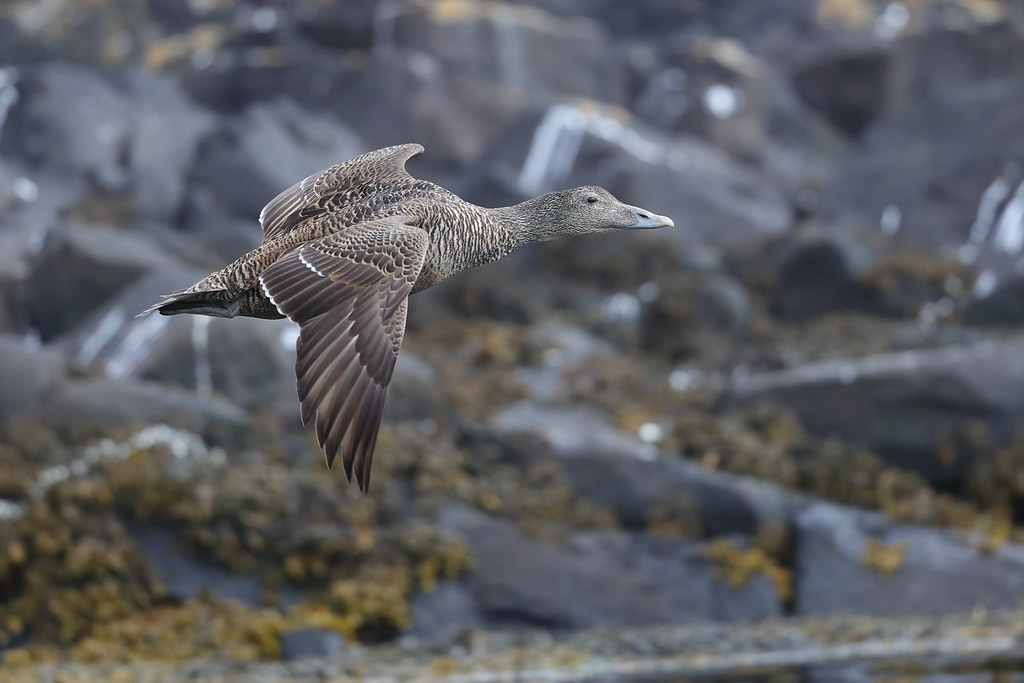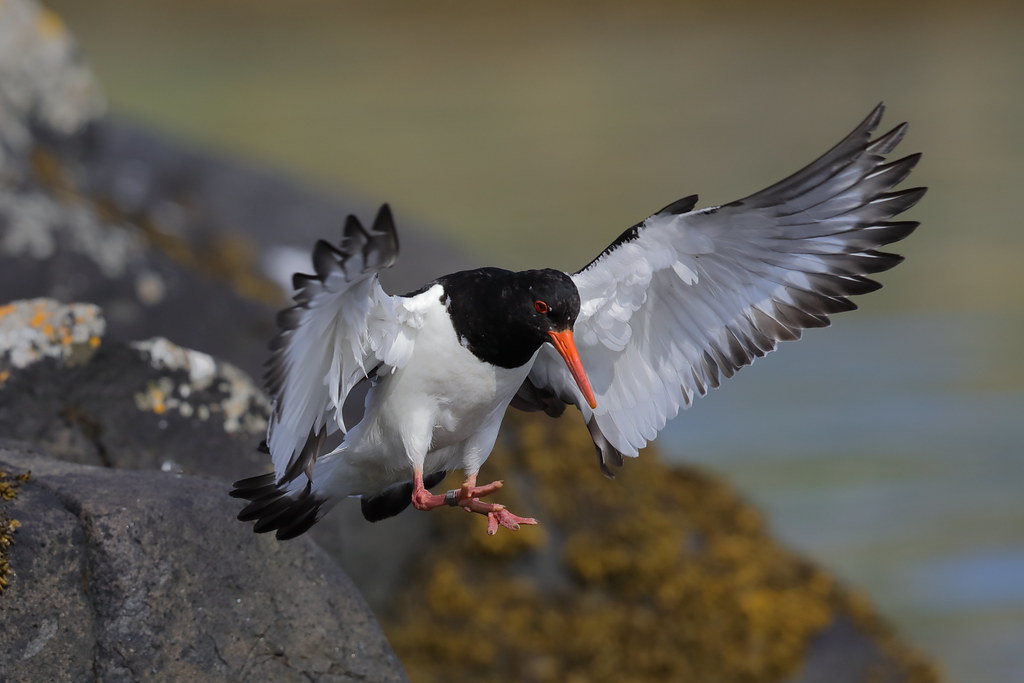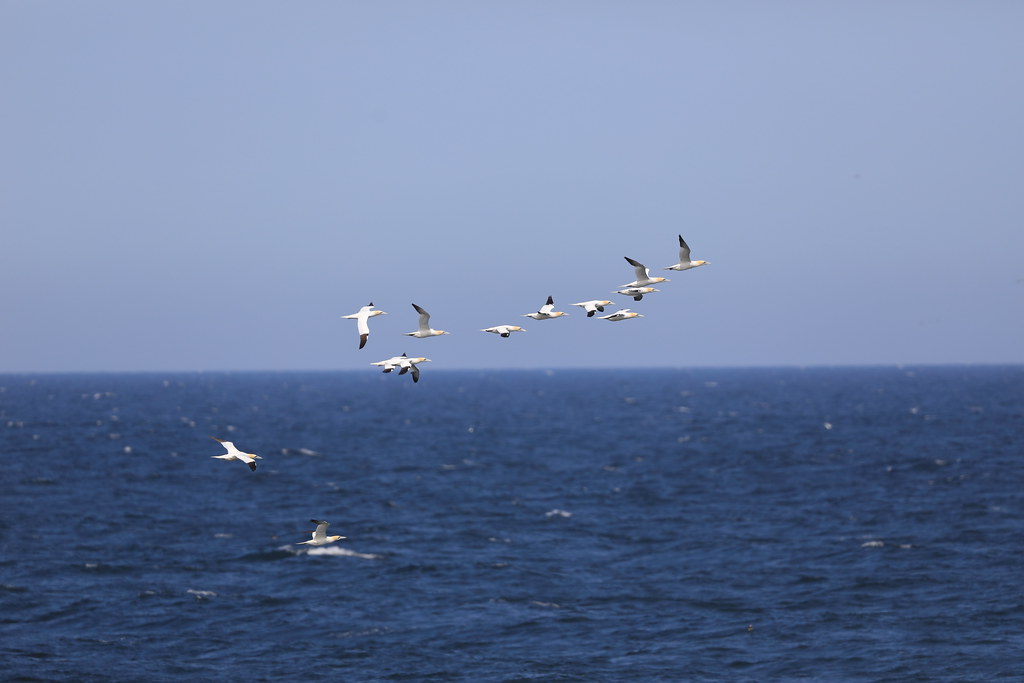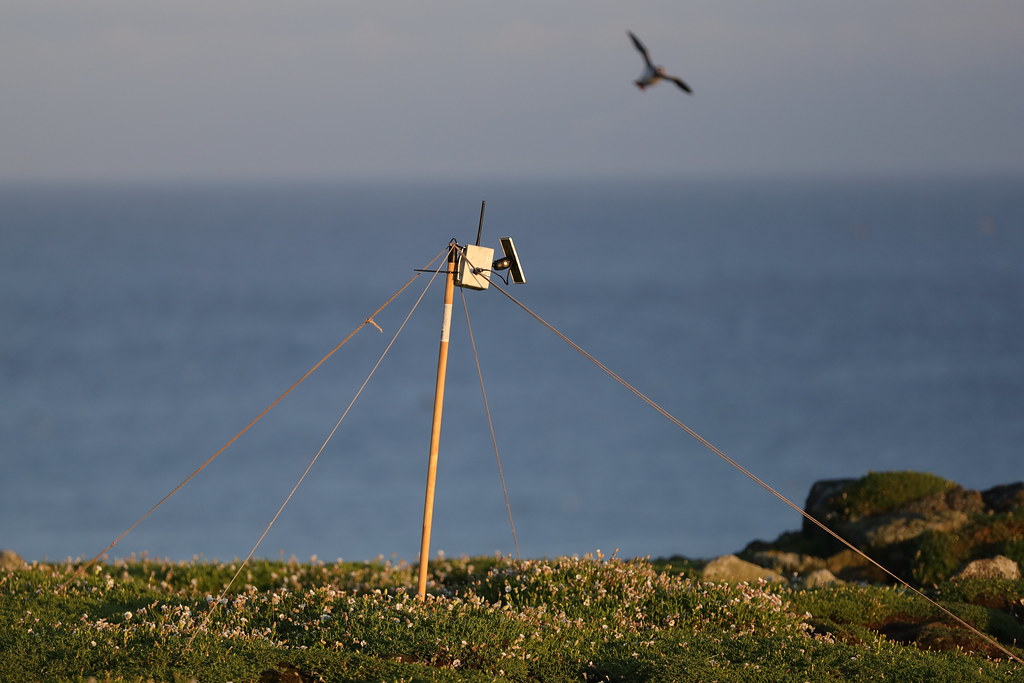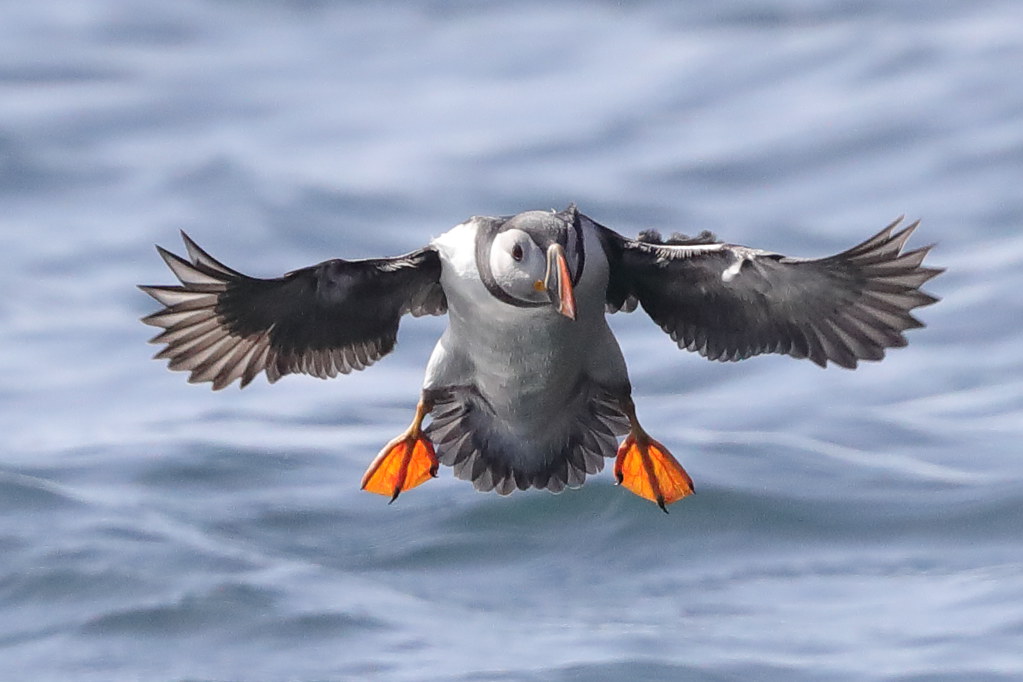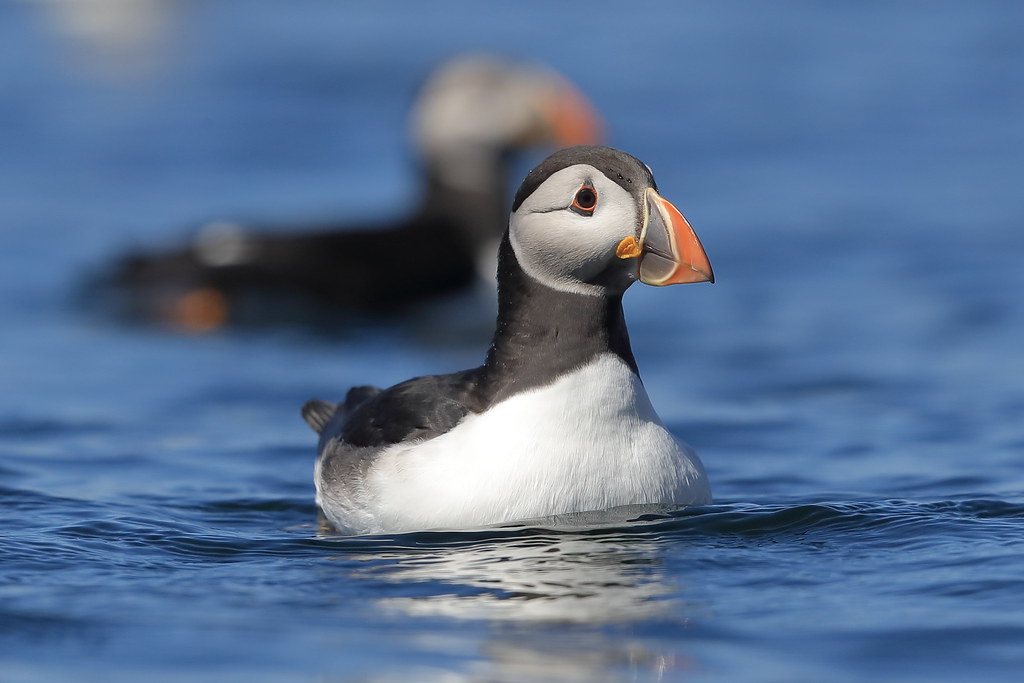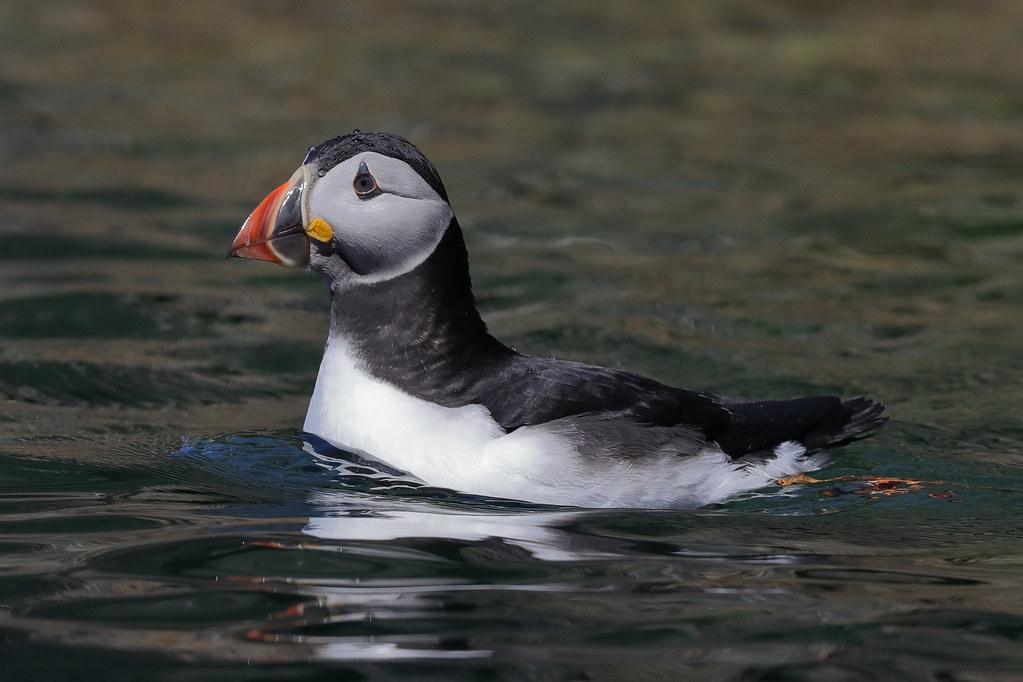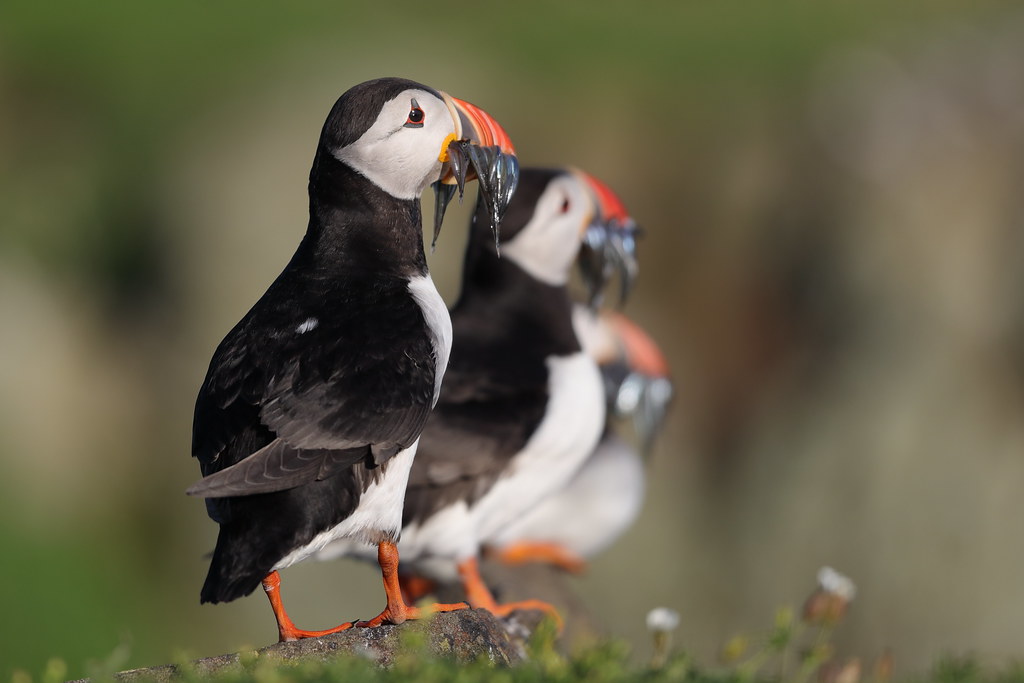To round off this years trip report a look at the remaining breeding species typically found on the Isle of May. It's a mixed story of success and sad decline so the latter first.
Shags. This year just 389 pairs are nesting on the island compared with 1916 pairs back in 1987. There's been a huge amount of research in to this species on the island. Meticulous counts and ringing exercises are not easy, access to nesting sites often in treacherous spots make life very difficult for research teams. As a photographer the rings or bling as we call them don't make for the most photogenic pose but the ease at which they can be read from distance is very important and a photographers needs rightly doesn't come in to the equation!
Besides, if you position yourself you can avoid seeing too much.

or make them less obvious at least

In fact you can eliminate them all together if you wait for the right moment!
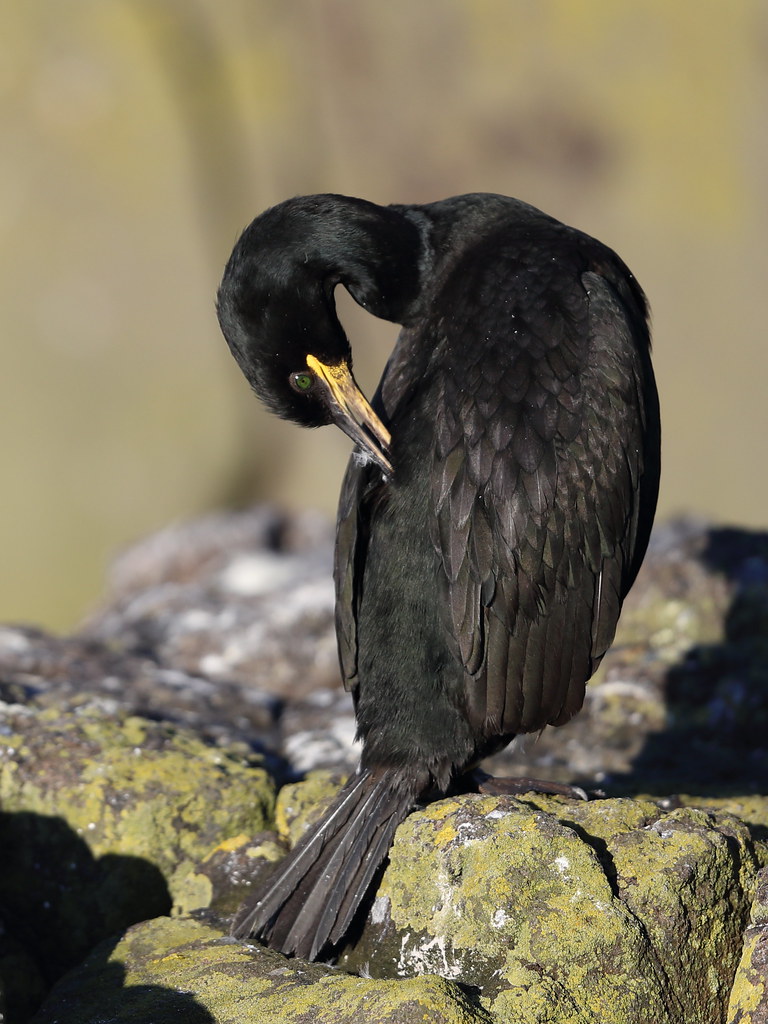
I got to photograph one swimming in amongst the Puffins.

and to my surprise when it got out of the water I discovered this one hadn't been ringed at all! An Isle of May rarity!!!

Most newly born chicks are down right ugly but somehow the Shag chicks top the lot.

The comparisons with the film "Alien" are plain to see.
The Guillemot chick is as cute as they come but the Shags remain ugly until maturity...well in my opinion anyway. No doubt their parents disagree.

My visit this year was probably only days away from the first Guillemot chicks leaving the nest. They literally leap off the cliff and down in to the sea below, sometimes bouncing off the rocks on the way down. It's a perilous time as they are easy targets for predation. There were 15974 nesting pairs this year. I wonder how many survived?
At least this year I found a few opportunities for photographing the adults on the water.

The sea mist descended on one particular day but although it softened the images I quite liked it.

I didn't spend a huge amount of time with the Guillemot, for once I haven't taken a single shot of a Guillemot with a fish in it's bill although I tried waiting for a while at my favourite nest spot.

Guillemots often appear to proudly parade their catch, often for quite some time, before deciding who the recipient will be. This usually happens when a group of adults huddle around a chick or two for protection. Anyway, the only shots I took were of the adults preening and posing.

Things with the Razorbills worked out to my advantage though!
I soon tired of getting them in flight returning to their cliff ledges, been there and done that before and all the shots look pretty similar.

Not the easiest to get but once you get the hang of it it's not so difficult as you might imagine.
There are far fewer Razorbills than Guillemots, roughly a quarter of the number of pairs at 4166. Like the Guillemots though they nest on narrow ledges, actually I should rephrase that. They lay their egg on the bare rock, as do the Guillemot. DIY obviously not their forte!
This year breeding was well advanced compared to last year when this site still had an egg there on my visit. By a piece of good luck I was there when an adult arrived back with some fish.
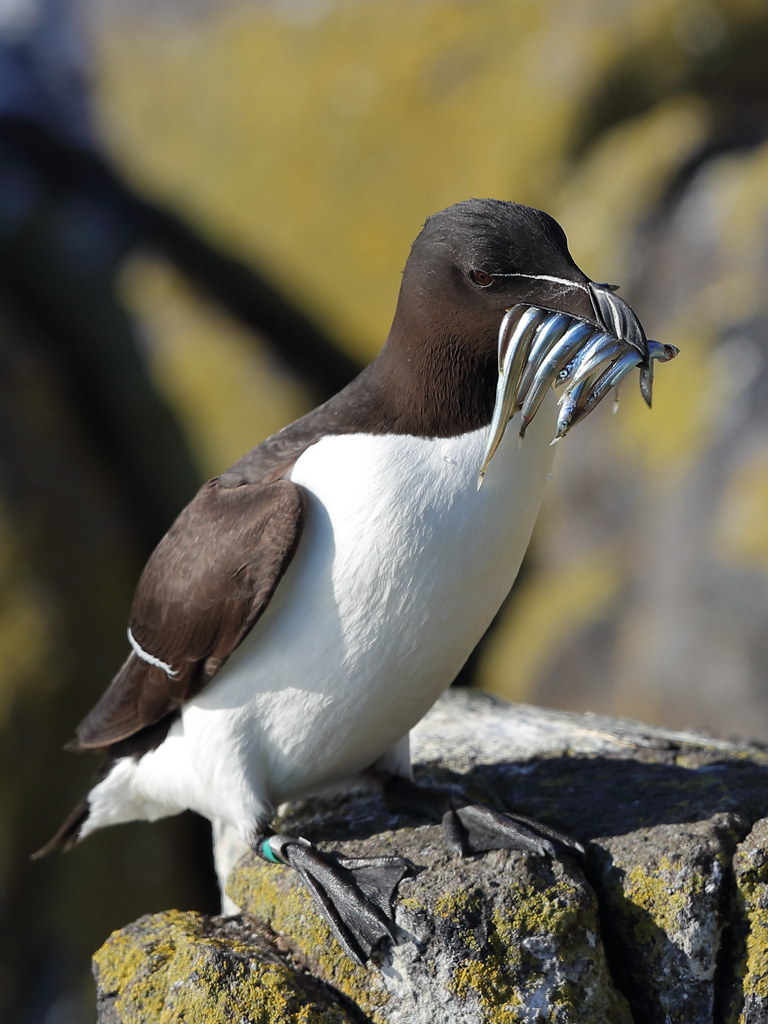
I was able to witness feeding the chick, well to a certain extent anyway.

Whilst the returning adult offered the fish that the chick took, one at a time, the other adult stood guard offering protection from attack.
Several days later I timed my arrival to perfection as an adult had just flown in again, but this time with a single fish.

That's a pretty big fish, surely too big for the chick?
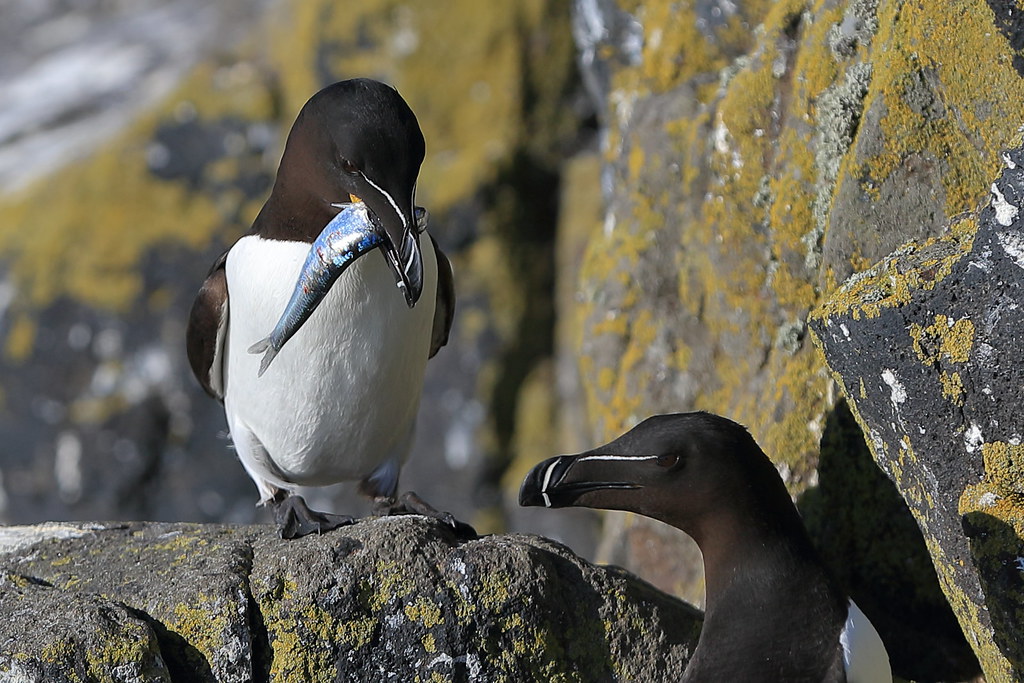
The adult obscured the food pass but one minute the fish was there the next it was gone. Swallowed whole with no bother whatsoever. Bit like me swallowing a 10kg Atlantic Salmon I would have thought!
Anyway, I was pleased to have witnessed the event, a special moment in a special week.
My week was rapidly coming to a close though and it was only on the last full day I even bothered taking some Fulmar shots.

They are still sitting on eggs at this time of year and are amongst the last to leave.They are a joy to watch flying as they seem to do it for the pure love of it. I was happy to watch rather than photograph them.
And that just about wraps it up really. Another week over too soon.
Not necessarily the best in some ways but hugely enjoyable in others. We had been blessed with decent weather. OK the wind did us no favours but we had a good amount of sunshine. As someone pointed out you don't often hear visitors complain about a lack of rain so I won't although ironically the drive home through Scotland was treacherous with incredible downpours and flooded roads. I wondered what it was like back on the island.

I'll just treat it as something to look forward to next time!
In the meantime my thanks to all the people that make my visit possible as well as those who dedicate their time and energies in trying to make sure our native wildlife survives and prospers.
Thank you all.
Dave
Shags. This year just 389 pairs are nesting on the island compared with 1916 pairs back in 1987. There's been a huge amount of research in to this species on the island. Meticulous counts and ringing exercises are not easy, access to nesting sites often in treacherous spots make life very difficult for research teams. As a photographer the rings or bling as we call them don't make for the most photogenic pose but the ease at which they can be read from distance is very important and a photographers needs rightly doesn't come in to the equation!
Besides, if you position yourself you can avoid seeing too much.

or make them less obvious at least

In fact you can eliminate them all together if you wait for the right moment!

I got to photograph one swimming in amongst the Puffins.

and to my surprise when it got out of the water I discovered this one hadn't been ringed at all! An Isle of May rarity!!!

Most newly born chicks are down right ugly but somehow the Shag chicks top the lot.

The comparisons with the film "Alien" are plain to see.
The Guillemot chick is as cute as they come but the Shags remain ugly until maturity...well in my opinion anyway. No doubt their parents disagree.

My visit this year was probably only days away from the first Guillemot chicks leaving the nest. They literally leap off the cliff and down in to the sea below, sometimes bouncing off the rocks on the way down. It's a perilous time as they are easy targets for predation. There were 15974 nesting pairs this year. I wonder how many survived?
At least this year I found a few opportunities for photographing the adults on the water.

The sea mist descended on one particular day but although it softened the images I quite liked it.

I didn't spend a huge amount of time with the Guillemot, for once I haven't taken a single shot of a Guillemot with a fish in it's bill although I tried waiting for a while at my favourite nest spot.

Guillemots often appear to proudly parade their catch, often for quite some time, before deciding who the recipient will be. This usually happens when a group of adults huddle around a chick or two for protection. Anyway, the only shots I took were of the adults preening and posing.

Things with the Razorbills worked out to my advantage though!
I soon tired of getting them in flight returning to their cliff ledges, been there and done that before and all the shots look pretty similar.

Not the easiest to get but once you get the hang of it it's not so difficult as you might imagine.
There are far fewer Razorbills than Guillemots, roughly a quarter of the number of pairs at 4166. Like the Guillemots though they nest on narrow ledges, actually I should rephrase that. They lay their egg on the bare rock, as do the Guillemot. DIY obviously not their forte!
This year breeding was well advanced compared to last year when this site still had an egg there on my visit. By a piece of good luck I was there when an adult arrived back with some fish.

I was able to witness feeding the chick, well to a certain extent anyway.

Whilst the returning adult offered the fish that the chick took, one at a time, the other adult stood guard offering protection from attack.
Several days later I timed my arrival to perfection as an adult had just flown in again, but this time with a single fish.

That's a pretty big fish, surely too big for the chick?

The adult obscured the food pass but one minute the fish was there the next it was gone. Swallowed whole with no bother whatsoever. Bit like me swallowing a 10kg Atlantic Salmon I would have thought!
Anyway, I was pleased to have witnessed the event, a special moment in a special week.
My week was rapidly coming to a close though and it was only on the last full day I even bothered taking some Fulmar shots.

They are still sitting on eggs at this time of year and are amongst the last to leave.They are a joy to watch flying as they seem to do it for the pure love of it. I was happy to watch rather than photograph them.
And that just about wraps it up really. Another week over too soon.
Not necessarily the best in some ways but hugely enjoyable in others. We had been blessed with decent weather. OK the wind did us no favours but we had a good amount of sunshine. As someone pointed out you don't often hear visitors complain about a lack of rain so I won't although ironically the drive home through Scotland was treacherous with incredible downpours and flooded roads. I wondered what it was like back on the island.

I'll just treat it as something to look forward to next time!
In the meantime my thanks to all the people that make my visit possible as well as those who dedicate their time and energies in trying to make sure our native wildlife survives and prospers.
Thank you all.
Dave
